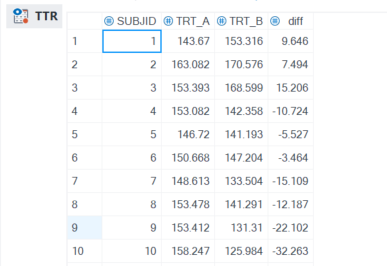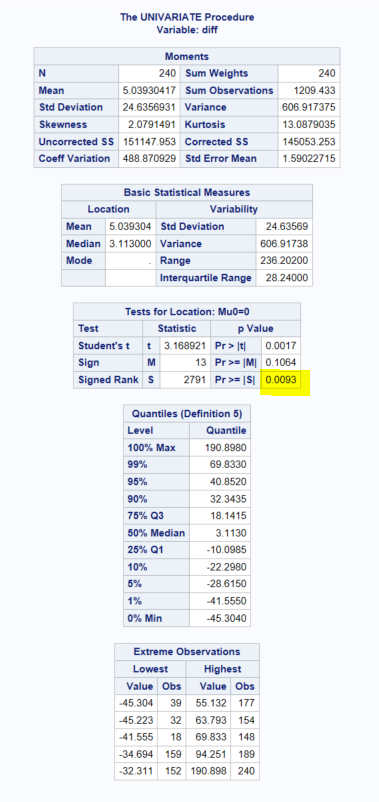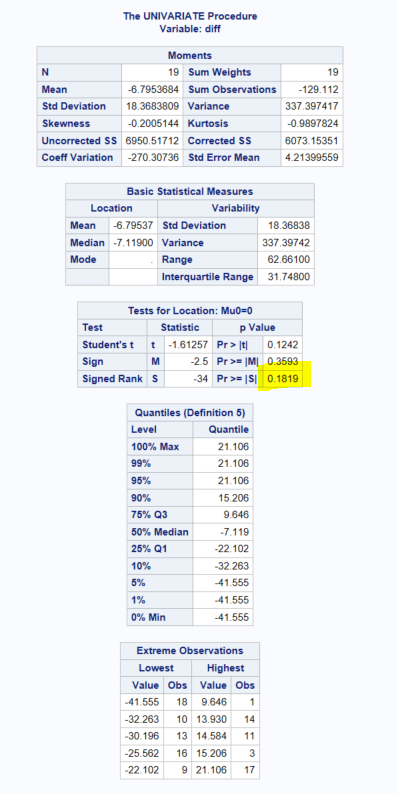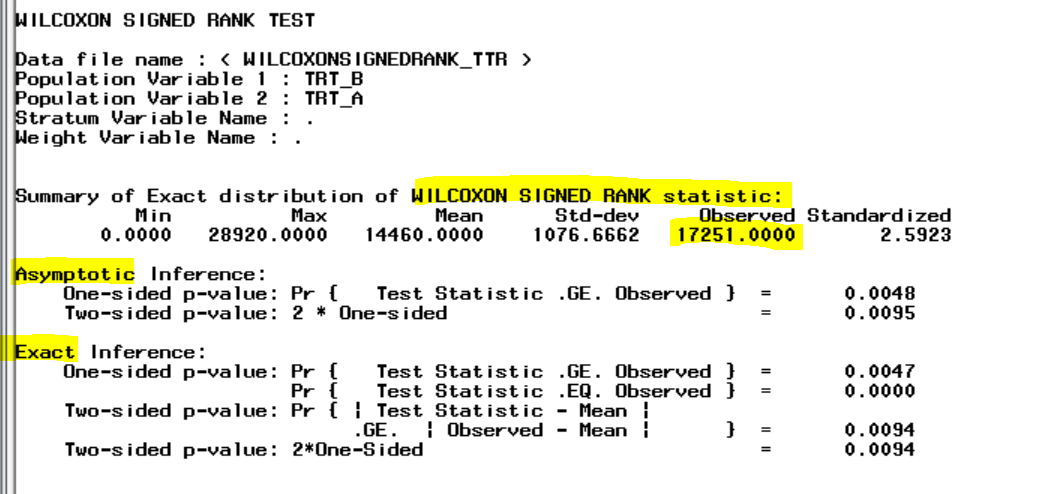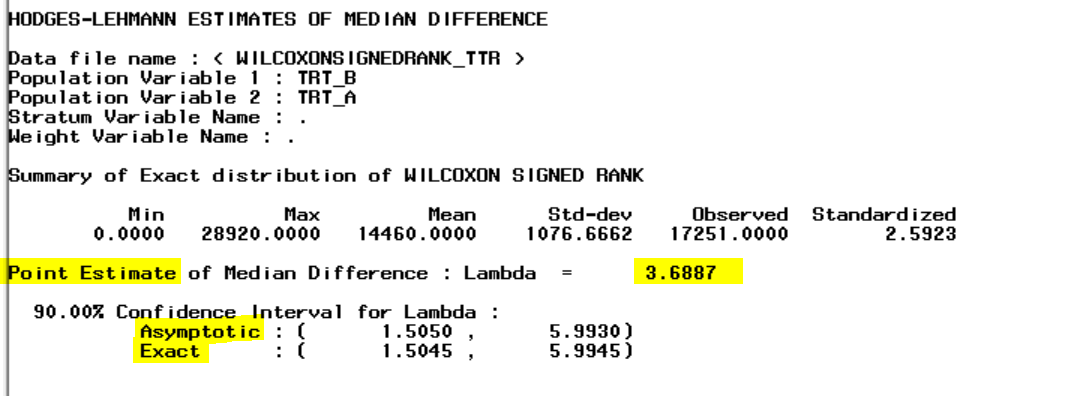data TTR;
set TTR;
diff = TRT_B - TRT_A;
run;Wilcoxon signed-rank test in SAS & StatXact®
Introduction
Similarily to what has been presented in R, we will explore the options of Wilcoxon Signed-Rank test that are avialable in SAS & StatXact.We will consider case with N>=20 or N<20 and without or with ties. For more information how to perform this analysis in R go here
Data
Analysis was be conducted on the same example dataset as in R.
Again, wilcoxon signed rank test was applied to analyse the time to return to baseline FEV1 post-mannitol challenge 2.
Analysis in SAS
Dataset without ties and N > 20
Let’s consider a case where the dataset has no ties and N (number of observations) = 240.
In SAS Wilcoxon Signed-Rank test is available using PROC UNIVARIATE.
proc univariate data=TTR
alpha=0.1;
var diff;
run;Dataset without ties and N≤20
Now let’s consider a smaller dataset, created by selecting first 19 observations from our main data.
data TTR_19;
set TTR;
if _N_ <= 19;
run;proc univariate data=TTR_19
alpha=0.1;
var diff;
run;Important notes on SAS
- Only PROC UNIVARIATE can be used in SAS to perform Wilcoxon Signed-Rank test. SAS documentation details are here.
- In regards to Wilcoxon S-R test, SAS provides only p value
- Hodges-Lehmann estimator or CI are not available and have to be implemented manually
- Provided p value is based on Signed Rank (S) statistic (modification of a common T+). Details are here
- SAS computes exact p values only for N ≤ 20. For larger samples uses an asymptotic t-Student distribution of the test statistic. For more information how the p value is calculated go here
- PROC UNIVARIATE apart from performing Wilcoxon S-R test presents as well basic statistical measures of variability and location, e.g median. The given median is not a “pseudo-median” (median of the Walsh averages), it is a “normal” median of the considered variable.
- Using CIQUANTNORMAL option we can get confidence limits for quantiles based on normal distribution. There are 5 different definitions for calculation quantiles available. See details from the SAS documentation here. It is important to note, those are not confidence intervals of estimator.
Approach to 0s and ties in SAS
- In SAS all the 0 differences are disregarded (Hollander and Wolfe, 1973). The sample size N is reduced to reflect the number of discarded zeros.
- Tied differences are given an average of the ranks. Statistic S is updated accordingly following Sprent algorythm (Sprent, 1993).
Analysis in StatXact®
StatXact® PROCs for SAS users is a clinical trial analysis software from Cytel for exact statistics. Package includes more than 150 procedures for exact inference statistical data and power analysis.
Dataset without ties and N > 20
/* Wilxocon S-R test - p values */
PROC PAIRED DATA=WilcoxonSignedRank_TTR
ALPHA=0.9;
WI/EX;
POPS TRT_B - TRT_A;
RUN;/* Wilcoxon S-R - H-L estimator and CI */
PROC PAIRED DATA=WilcoxonSignedRank_TTR
ALPHA=0.9;
HL/EX;
POPS TRT_B - TRT_A;
RUN;Important notes on StatXact®
- Only PROC PAIRED can be used in StatXact to perform Wilcoxon Signed-Rank test
- Follows Sprent (1993) approach for Wilcoxon Signed-Rank test and Lehmann (1975) for H-L estimate and CI
- Provides exact/non-exact p values, (exact) H-L estimator and exact/non-exact CIs
- p value is based on a common T+ statistic (sum of ranks of the positive differences)
Approach to 0s and ties in StatXact®
- Using ZEROS option we can compute H-L estimate including all differences, but by default 0s are excluded.
- Tied differences are given an average of the ranks. Statistic S is updated accordingly following Sprent algorythm (Sprent, 1993).
